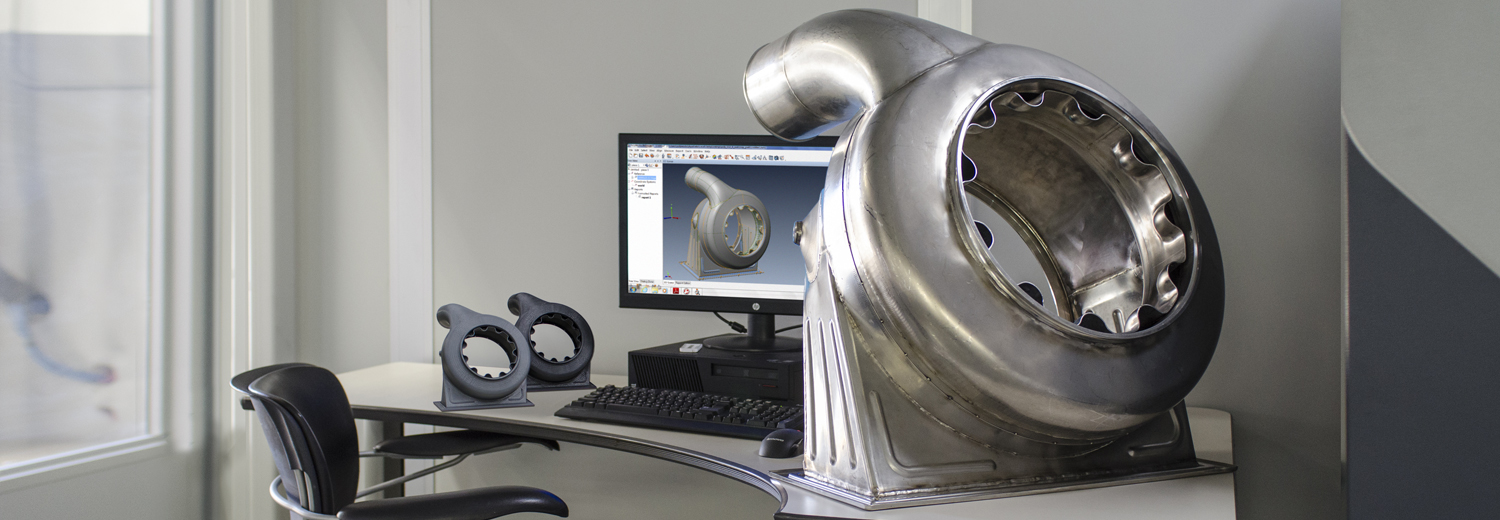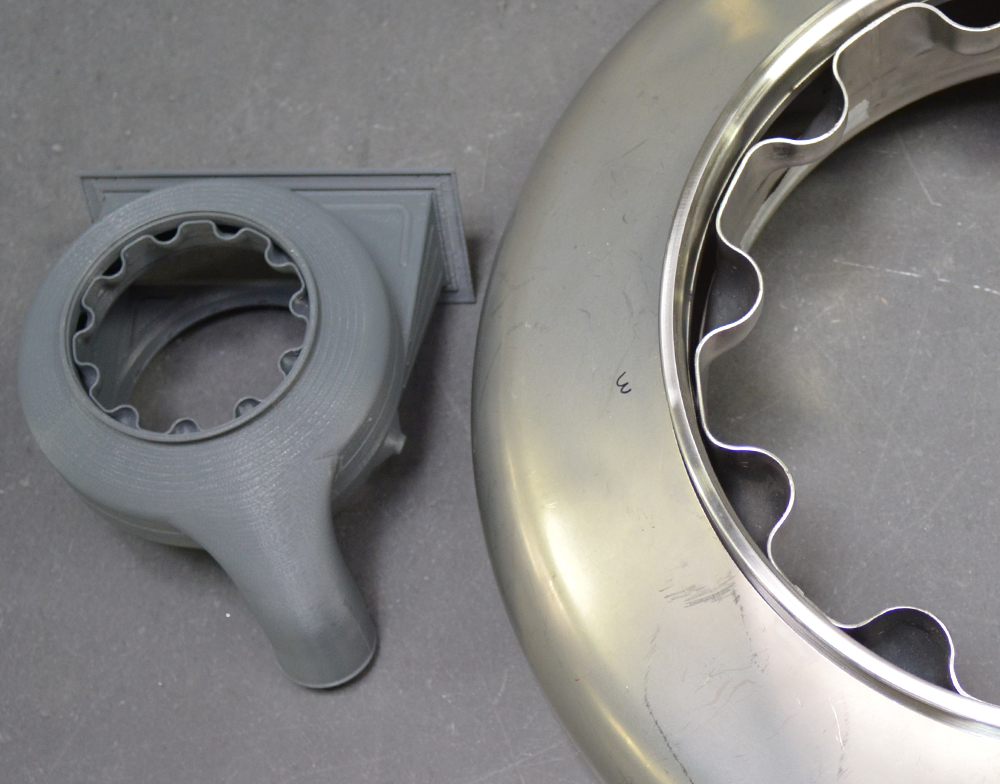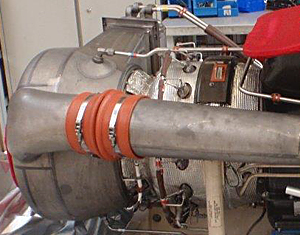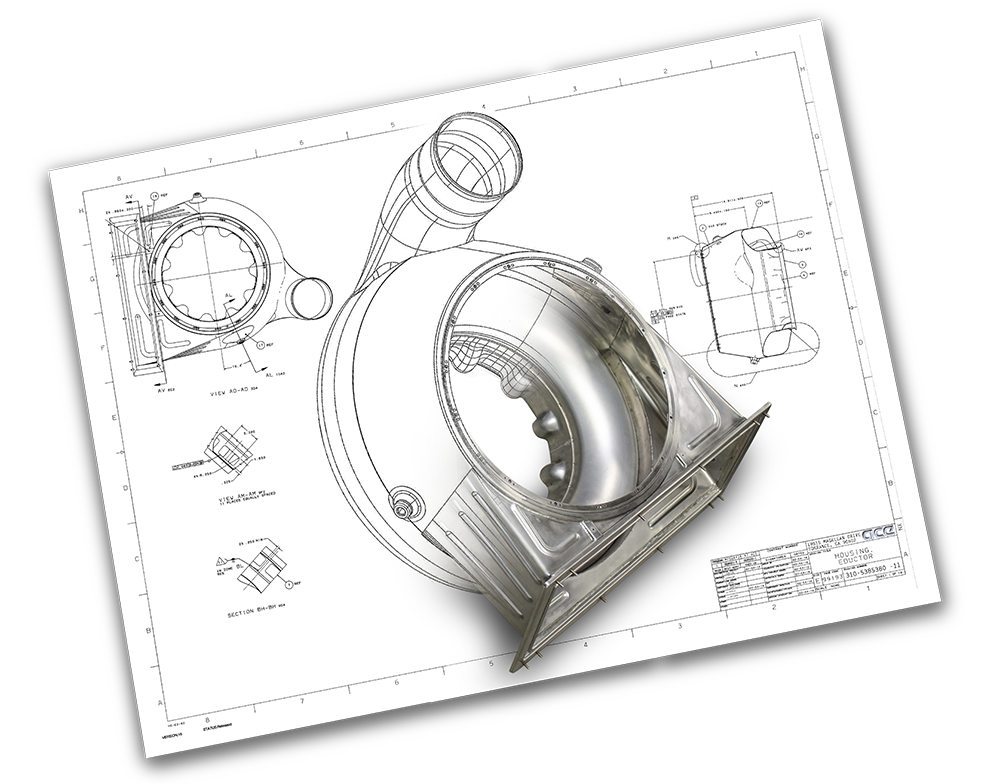A Complex Eductor for the Boeing 777 APU (Auxiliary Power Unit).
PRODUCT OVERVIEW
- Complex, Custom Built, Made by Hand
- Built to Withstand Extreme Environment
- ACE Used 3D Printing Technology to Analyze and Maximize Strength of Design
- CNC-Milled Dies for Single Piece Forms
- Reduced Number of Sections in Construction
- Minimized Weld Joints and Maximized Strength and Durability
The Boeing 777 relies on just two wing engines to provide thrust for flight. Thus, in its development, engineers determined that no other power should be bled off them for system hydraulics, and designed a space in its tail for a third, auxiliary gas turbine engine, or APU (as found in numerous other aircraft). To remove heat generated by the APU, an axial, vane type fan, driven off the APU gearbox, is usually provided to pump cooling air past the oil cooler and the compartment. But because of the high speeds and rotating parts, these fans are susceptible to mechanical failures. When they do occur, it requires that the aircraft be removed from operation. Further, these fans sometimes leak oil into the cooling flow which then covers the oil cooler fins resulting in reduced heat transfer and the possibility of an APU automatic shutdown because of excessive oil temperature.
This engine, a Honeywell 331-500, is unique in that it is the first to use an eductor at the tail end to circulate air around the engine and to cool the oil. It does this by using the kinetic force of the engine’s exhaust to create suction, which draws cold air into the compartment. And it does so with no moving parts.
ACE was chosen as the second supplier to build these quite large and very strong units. ACE’s unique capabilities enable us to build the units with less individual sections, and therefore less welded seams – making them far stronger and less subject to vibration failure. First, the shell and supports are formed in our drop hammer facility. They are formed on massive dies, which ACE carved from huge solid blocks of Kirksite, using 3D software and our large format CNC milling machines. Once they have been laser-trimmed, they are transported to the assembly and welding work centers to be constructed. Once complete, the eductors go through a battery of dimensional measurement tests with a blue light laser, pinpointing 52,000 individual measures per second and feeding the information into software which compares the finished piece to the original digital 3D model. Standing nearly four feet tall and weighing 40 lbs., they still require strict tolerances of 1/1000 of an inch, a remarkable achievement and a testament to our ACE Welding and Assembly Team.









